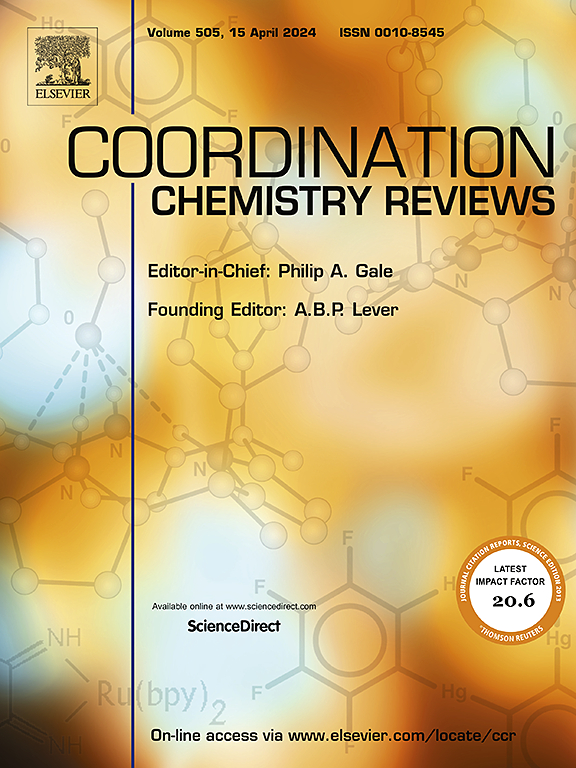Halogen bonding in supramolecular chemistry: From molecular components to assembled structures
IF 20.3
1区 化学
Q1 CHEMISTRY, INORGANIC & NUCLEAR
引用次数: 0
Abstract
Halogen bonding, one of the important driving forces for molecular assemblies, plays a significant role in supramolecular chemistry due to its stability, tunability, and directionality. In recent years, supramolecular structures driven by halogen bonding have been rapidly developed at the theoretical and practical levels, and their potential for application in sensing, detection, optical engineering, and anion recognition has been expanded. In this review, we focus on halogen bond-assisted molecular components and assembled structures and conduct an in-depth analysis of the latest practical applications of halogen bond-directed functional assemblies. Finally, we discuss the future development trends and challenges of the assemblies driven by halogen bonding as new functional materials. This review summarizes and analyzes current research accomplishments, providing a theoretical foundation and practical guidance for designing supramolecular assembly materials driven by halogen bonding.求助全文
约1分钟内获得全文
求助全文
来源期刊

Coordination Chemistry Reviews
化学-无机化学与核化学
CiteScore
34.30
自引率
5.30%
发文量
457
审稿时长
54 days
期刊介绍:
Coordination Chemistry Reviews offers rapid publication of review articles on current and significant topics in coordination chemistry, encompassing organometallic, supramolecular, theoretical, and bioinorganic chemistry. It also covers catalysis, materials chemistry, and metal-organic frameworks from a coordination chemistry perspective. Reviews summarize recent developments or discuss specific techniques, welcoming contributions from both established and emerging researchers.
The journal releases special issues on timely subjects, including those featuring contributions from specific regions or conferences. Occasional full-length book articles are also featured. Additionally, special volumes cover annual reviews of main group chemistry, transition metal group chemistry, and organometallic chemistry. These comprehensive reviews are vital resources for those engaged in coordination chemistry, further establishing Coordination Chemistry Reviews as a hub for insightful surveys in inorganic and physical inorganic chemistry.
 求助内容:
求助内容: 应助结果提醒方式:
应助结果提醒方式:


